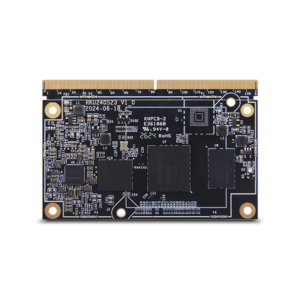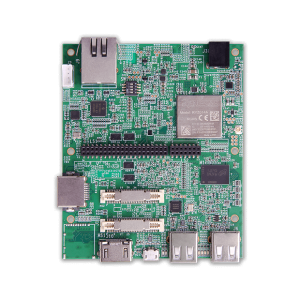A Deep Dive into Computer-on-Modules: Powering the Next Generation of Edge Devices
A Deep Dive into Computer-on-Modules: Powering the Next Generation of Edge Devices
Blog Article
A Deep Dive into Computer-on-Modules: Powering the Next Generation of Edge Devices
In today's fast-paced technological landscape, organizations and designers are significantly looking at modular alternatives to meet the ever-growing needs of high-performance applications. One particular alternative developing traction is the use of computer on module. These lightweight, self-contained systems are loaded with all the current essential the different parts of a computer, such as the processor, memory, storage, and connectivity interfaces, all incorporated into just one unit. In this article, we explore why Computer-on-Modules are becoming a go-to choice for scalable, high-performance purposes across various industries.

1. Small Style and Integration
Among the major features of COMs is their small sort factor. These segments are created to combine all critical components of a computer, reducing the necessity for multiple distinct elements and which makes it simpler to create small, space-efficient systems. That integration enables designers to build powerful options without compromising the entire measurement of the finish item, which is very valuable in industries such as embedded techniques, IoT devices, and industrial automation.
2. Scalability for Diverse Purposes
Scalability is an essential factor for contemporary applications, particularly in groups like telecommunications, automotive, and edge computing. With Computer-on-Modules, businesses can very quickly degree up or down with regards to the particular performance and reference demands of their projects. Like, a company building an advantage processing alternative can start with a module that fits fundamental needs and then upgrade to more powerful modules as the workload or control demands grow. This versatility enables companies to future-proof their opportunities and align equipment with growing performance demands.
3. High-Performance Research
Many high-performance applications require a robust computational backbone to take care of challenging projects such as for instance real-time data running, video analytics, or device learning. COMs are usually made with powerful processors, high-speed interfaces, and ample storage, making them capable of supplying the high throughput and low-latency efficiency required for these applications. More over, their ability to guide the most recent processor architectures ensures that programs may remain at the front of efficiency benchmarks.
4. Price Efficiency and Time Savings
Yet another substantial advantage of applying Computer-on-Modules is price efficiency. Because the segments come pre-integrated with necessary parts, designers save your self equally time and resources that will usually be used on planning, testing, and assembling personal components. This may lead to decreased growth rounds and a quicker time-to-market for products, which can be vital in aggressive industries. Additionally, since the hardware parts are standardized, the risk of incompatibility is reduced, ultimately causing simpler growth techniques and decrease executive costs.
5. Flexible Customization
While COMs offer a large level of integration, they are also made for flexibility. Many COMs include different choices for I/O interfaces, memory options, and power management options, allowing developers to tailor the module to the precise needs of these application. This versatility is particularly valuable in industries where customization is essential, such as for instance medical units, robotics, and automotive applications.

Conclusion
In summary, Computer-on-Modules present numerous advantages for companies and designers seeking to create scalable, high-performance solutions. Their compact style, scalability, powerful running abilities, cost-efficiency, and customization alternatives cause them to become a perfect choice for a wide range of applications. As industries continue to evolve and demand better, variable options, COMs may truly enjoy a critical role in shaping the ongoing future of technology. Report this page